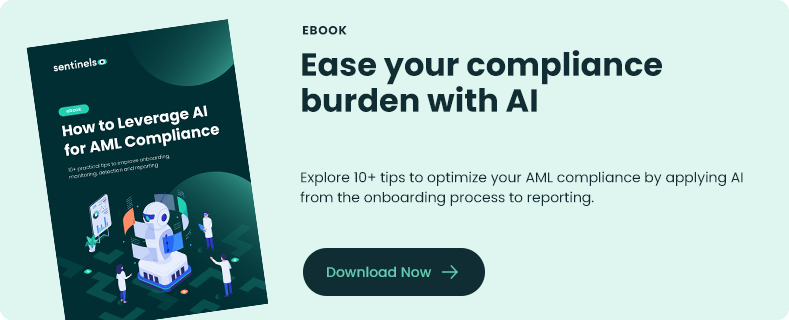In the previous blog in this series, we discussed how the increasingly complex regulatory environment is making it trickier for firms to meet their client monitoring obligations and how AI-powered regulatory technology (‘regtech’) tools can ease much of the burden. In this blog, we’re going to look at detection and how AI can help firms detect money laundering and other illegal activities.
AI in Regtech: How Can AI Be Applied to Detect Money Laundering?
In the previous blog in this series, we discussed how the increasingly complex regulatory environment is making it trickier for firms to meet their client monitoring obligations and how AI-powered regulatory technology (‘regtech’) tools can ease much of the burden. In this blog, we’re going to look at detection and how AI can help firms detect money laundering and other illegal activities.
Sentinels
Money laundering continues to be a huge problem for financial firms. According to the United Nations Office on Drugs and Crime (UNODC), between 2 and 5% of global gross domestic product (GDP) is laundered each year, which amounts to between EUR 715 billion and 1.87 trillion.
While the European Union (EU) and nation-states around the world are making concerted efforts to fight money laundering, for example by introducing more stringent anti-money laundering regulations, firms have a big role to play in prevention, detection, and reporting.
What is Detection in Regulatory Compliance?
Detection in regulatory compliance involves the discovery and flagging of potential money laundering and other fraudulent financial activity, and it’s clear that firms are beginning to understand the importance of employing a robust tech-led detection process in the post-pandemic world.
A big shift in consumer behaviour, which of course was caused by the pandemic itself, has forced many financial firms to see that their legacy monitoring and detection strategies simply aren’t accurate or agile enough to meet regulatory obligations in the digital age.
According to a survey by KPMG and software company SAS, a third of finance firms reported that they are accelerating their use of artificial intelligence (AI) to detect money laundering, with 57% saying that they intend to implement AI solutions within 18 months.
How is AI Used in the RegTech Detection Process?
AI can be utilized in the detection process in many ways, for example:
- Reduce false positives: False positives are a big problem for financial firms because they waste the time and resources of the human operators who are forced to review them. When detection is powered by AI models, however, false positives are drastically reduced because the AI learns over time and becomes better at detecting and avoiding them.
- More accurate detection: AI-led detection is much more accurate because AI models are far better at detecting potential instances of money laundering than humans are. They’re also a lot better at detecting patterns, data anomalies, and potential relationships between data than a human being ever could be.
Even the most careful firm with the very best preventative processes cannot safeguard against money laundering and financial crime 100% of the time. Things can and do slip the net, and firms need a robust detection regime in place to spot when this happens.
“AI can be particularly useful for detecting unusual single transactions which employees find harder to spot by using systems to build up an image of normal customer behavior and creating an alert when something unusual arises,” says Kingsley Napley LLP partner Johanna Walsh.
In the fourth and final blog post of this series, we’re going to look at how AI can help firms report suspicious activity to regulators.


